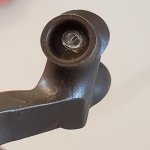I was always under the impression that it was bad form to dry fire a rim fire firearm as the firing pin could cause receiver damage.
So just picked up a new Ruger American 17 HMR and low and behold the manual states that after unloading and ensuring the chamber is empty, close the bolt and with the rifle pointing in a safe direction, pull the trigger.
Also says that after trigger pull adjustment, to familiarize yourself with the trigger’s pull weight by dry-firing.
Goes against what I believed before and I don’t think I’ll be doing it but thought I’d mention it.
So just picked up a new Ruger American 17 HMR and low and behold the manual states that after unloading and ensuring the chamber is empty, close the bolt and with the rifle pointing in a safe direction, pull the trigger.
Also says that after trigger pull adjustment, to familiarize yourself with the trigger’s pull weight by dry-firing.
Goes against what I believed before and I don’t think I’ll be doing it but thought I’d mention it.








































































